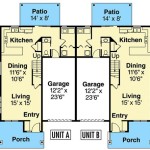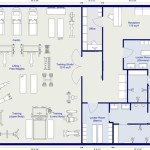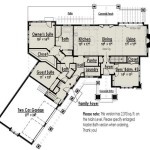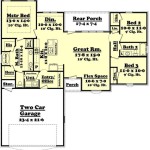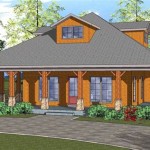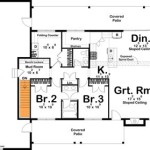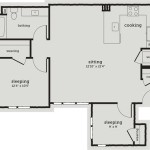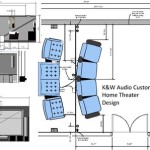A-Frame Tiny House Plans: Design, Construction, and Considerations
The allure of tiny house living continues to grow, fueled by a desire for minimalist lifestyles, reduced environmental impact, and financial freedom. Among the diverse designs of tiny houses, the A-frame structure stands out due to its simplicity, structural efficiency, and distinctive aesthetic. This article provides an in-depth look at A-frame tiny house plans, exploring aspects of design considerations, construction techniques, and key planning elements.
A-frame houses are characterized by their steeply angled roofs that extend to the ground, forming the shape of the letter "A." This design inherently provides structural stability and efficient shedding of snow and rain. However, the sharply angled walls also present challenges for maximizing usable interior space. Careful planning and design are crucial for optimizing functionality and creating a comfortable living environment within an A-frame tiny house.
The increasing popularity of A-frame tiny houses has resulted in a wide variety of plans being available, ranging from simple, off-grid cabins to more elaborate designs with modern amenities. Understanding the fundamentals of A-frame construction and the intricacies of tiny house design is essential for selecting and adapting a plan that meets individual needs and preferences.
Understanding the Core Principles of A-Frame Design
The A-frame's defining structural characteristic is its inherent strength. The angled walls effectively transfer loads directly to the foundation, minimizing the need for extensive internal support structures. This allows for open floor plans and maximizes vertical space, which can be utilized through lofted sleeping areas or storage solutions.
However, the sloping walls also create limitations. The usable floor area is significantly smaller than the overall footprint of the house, particularly at the lower levels. This necessitates careful consideration of furniture placement and storage solutions. Designing built-in features, such as benches, shelving, and fold-down tables, can help optimize space utilization.
Furthermore, the angle of the roof affects the interior volume and natural light. Steeper angles provide more headroom and a greater sense of spaciousness, while shallower angles may feel more cramped. Window placement is also critical. Skylights and strategically positioned windows can help maximize natural light penetration and create a brighter, more inviting interior.
Material selection plays a significant role in the overall performance of an A-frame tiny house. Lightweight materials, such as wood framing and metal roofing, are commonly used to minimize the load on the foundation. Insulation is paramount for energy efficiency, and appropriate insulation materials must be chosen based on climate and budget. Ventilation is also critical to prevent moisture buildup and maintain indoor air quality.
Key Considerations When Choosing A-Frame Tiny House Plans
Selecting the right A-frame tiny house plan involves a thorough assessment of individual needs, budget constraints, and site conditions. Several factors should be considered before making a decision.
Size and Layout:
Determining the appropriate size of the tiny house is crucial. Consider the number of occupants, desired amenities, and storage requirements. Evaluate different floor plans to find one that optimizes space utilization and provides a comfortable living environment. Pay close attention to the placement of essential features, such as the kitchen, bathroom, and sleeping area. Consider whether a lofted sleeping area is desirable, and ensure that there is adequate headroom and access.Foundation:
The foundation of an A-frame tiny house can be either permanent or temporary. Permanent foundations, such as concrete slabs or piers, offer greater stability and durability. Temporary foundations, such as trailers or skids, allow for greater mobility. The choice of foundation will depend on local building codes, site conditions, and the desired level of permanence.Building Materials:
The choice of building materials will affect the cost, durability, and aesthetic of the tiny house. Wood framing is a common and cost-effective option, while steel framing offers greater strength and durability. Roofing materials can range from asphalt shingles to metal roofing, with each option offering different levels of durability and weather resistance. Insulation materials are critical for energy efficiency and should be chosen based on climate and budget. Consider using sustainable and eco-friendly materials whenever possible.Permits and Regulations:
Before starting construction, it is essential to check local building codes and obtain the necessary permits. Tiny house regulations vary widely from jurisdiction to jurisdiction, and it is important to ensure that the design complies with all applicable requirements. Considerations include minimum size requirements, setback distances, and zoning regulations. Failure to comply with building codes can result in fines, delays, or even the requirement to demolish the structure.Cost:
The cost of building an A-frame tiny house will vary depending on the size, materials, and complexity of the design. Develop a detailed budget that includes the cost of materials, labor, permits, and other expenses. Consider prioritizing essential features and making compromises on less important items to stay within budget. Factor in potential cost overruns and unexpected expenses.Adapting A-Frame Tiny House Plans to Specific Needs and Site Conditions
While pre-designed A-frame tiny house plans offer a convenient starting point, they often need to be adapted to meet specific needs and site conditions. This may involve modifications to the floor plan, foundation, or building materials.
Floor Plan Modifications:
Adapting the floor plan can involve rearranging the layout of rooms, adding or removing walls, or incorporating custom features. Consider the placement of windows and doors to maximize natural light and ventilation. Adjust the size and shape of the kitchen and bathroom to meet individual needs. Integrate storage solutions, such as built-in shelves, drawers, and cabinets, to optimize space utilization.Foundation Adjustments:
The foundation may need to be adjusted to accommodate specific site conditions. If the site is sloped, a pier and beam foundation may be necessary to level the building. If the soil is unstable, a deeper foundation may be required. Consult with a structural engineer to ensure that the foundation is adequate for the soil conditions and the weight of the building.Material Substitutions:
Substituting building materials can be necessary to meet budget constraints or address specific material availability issues. Consider alternative framing materials, such as steel or engineered lumber, if wood is scarce or expensive. Explore different roofing materials to find a cost-effective and durable option. Choose insulation materials that are appropriate for the climate and budget. Always ensure that any material substitutions meet local building codes and provide adequate structural integrity and weather resistance.Integrating Off-Grid Systems:
For those seeking a more sustainable lifestyle, integrating off-grid systems, such as solar panels, rainwater harvesting, and composting toilets, can be implemented into A-frame tiny house designs. Carefully consider the placement of solar panels to maximize sun exposure. Design a rainwater harvesting system that collects and stores rainwater for potable or non-potable uses. Choose a composting toilet system that meets local regulations and is appropriate for the number of occupants. Integrating these systems requires careful planning and coordination, but can significantly reduce the environmental impact of the tiny house.In conclusion, A-frame tiny house plans offer a unique and appealing option for those looking to embrace minimalist living. The inherent structural strengths of the A-frame design, coupled with careful planning and adaptation, can result in a comfortable, functional, and aesthetically pleasing living space. Understanding the core principles of A-frame design, considering key planning elements, and adapting plans to specific needs and site conditions are essential for successfully building an A-frame tiny house.

Pin On Tiny Cabins

How To Build This A Frame Cabin That Will Pay For Itself Hipcamp Journal

A Frame Cottage Plans For Guest House Temp Cabin Plan

Unique Small House Plans A Frames Cabins Sheds Plan With Loft

Tiny House Plans A Frame Vacation Cabin Gardenfork Eclectic Diy

A Frame House Thediyplan

14x16 A Frame Cabin Plan Two Story Triangular Tiny House

Amazing A Frame House Plans Houseplans Blog Com

14 X14 Tiny A Frame Cabin Plans By Lamar Alexander

A Frame Two Story Tiny House Plans 20 X 26

